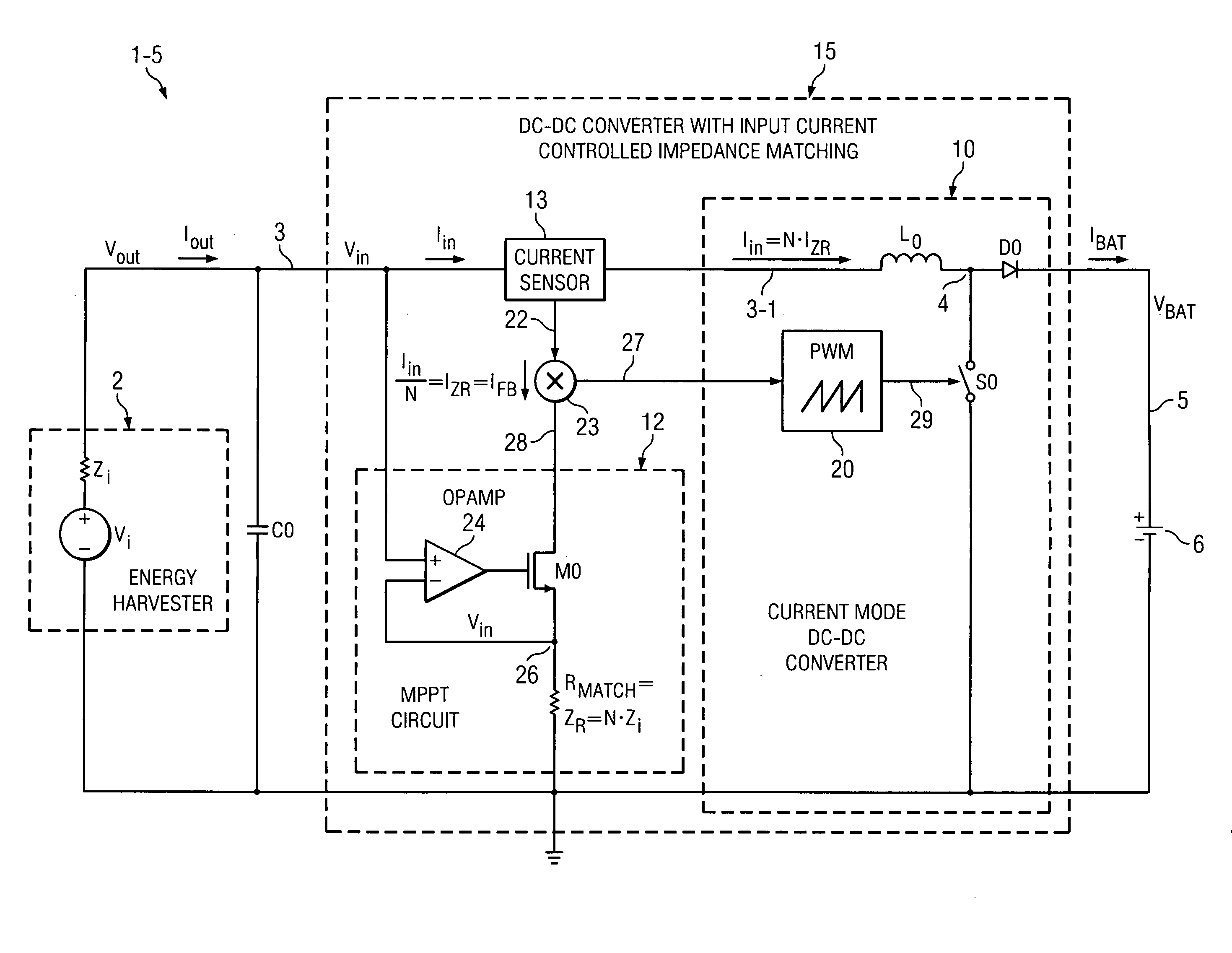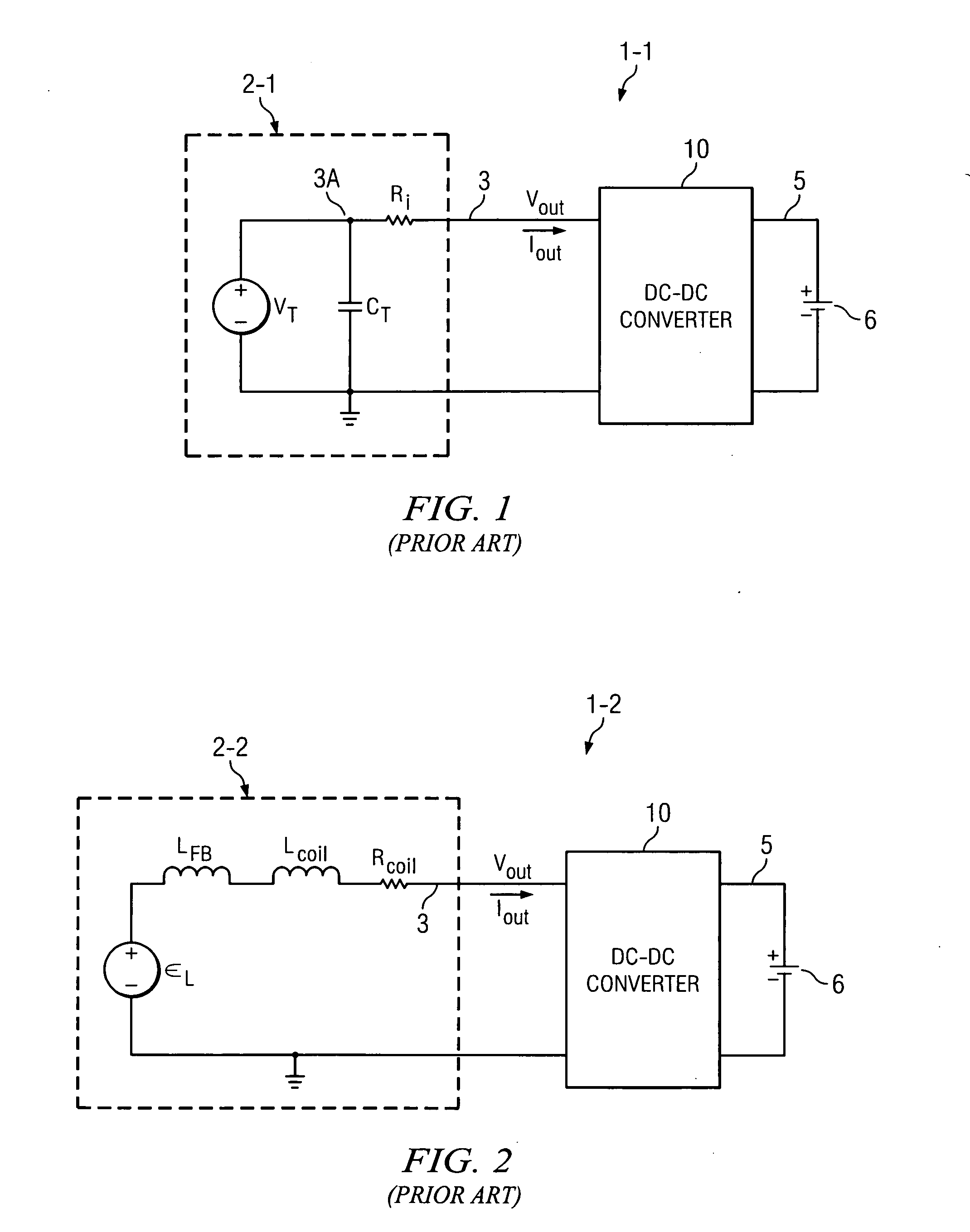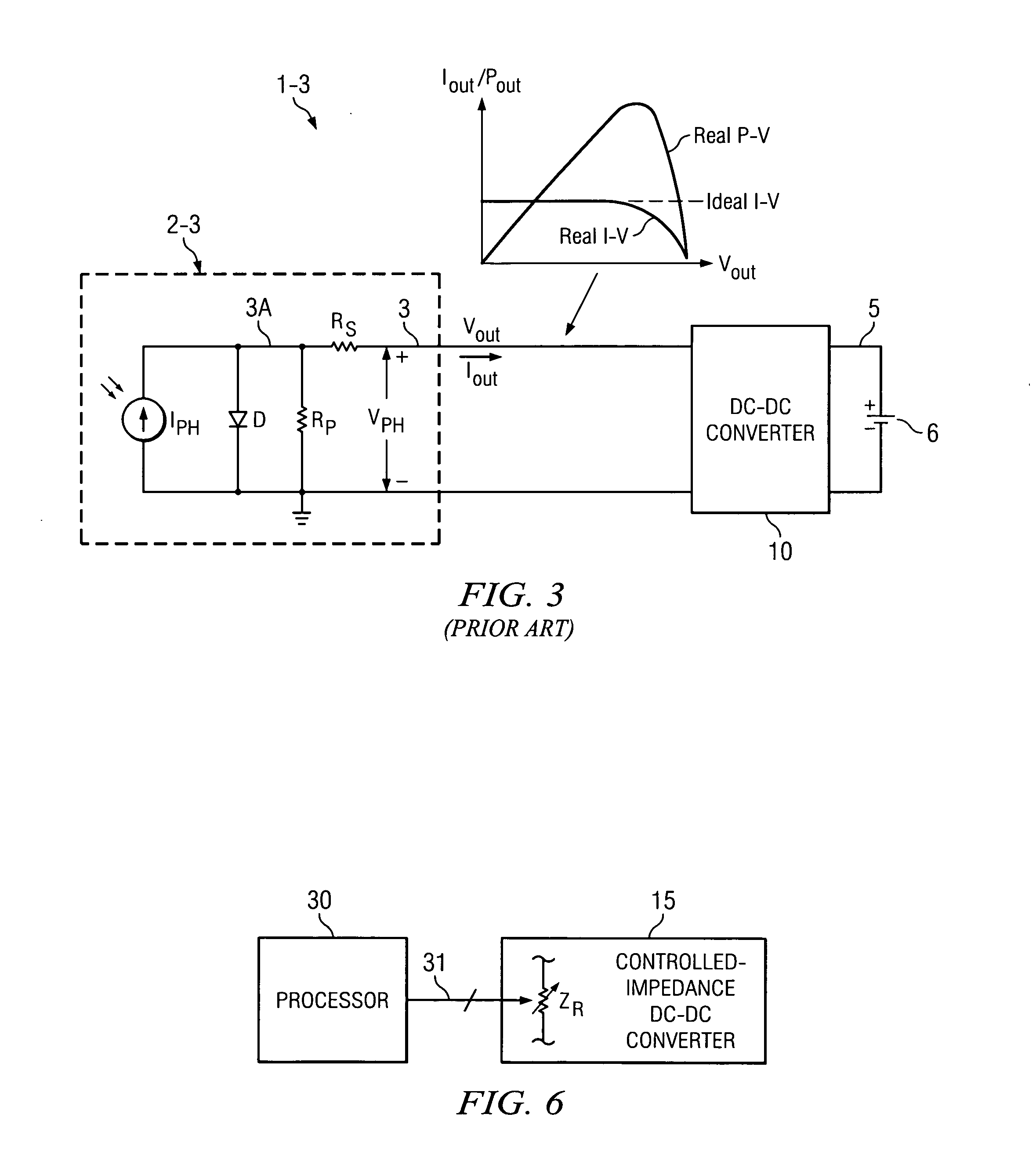Battery charger and method for collecting maximum power from energy harvester circuit
a technology of energy harvester circuit and battery charger, which is applied in the direction of electric variable regulation, process and machine control, instruments, etc., can solve the problems of reducing the amount of power transferred, wasting corresponding power, and inability to convert into suitable output voltage and output current, etc., to achieve the maximum power point tracking of an energy harvester, and simple economic techniqu
- Summary
- Abstract
- Description
- Claims
- Application Information
AI Technical Summary
Benefits of technology
Problems solved by technology
Method used
Image
Examples
Embodiment Construction
[0046]FIG. 4 shows an energy harvesting system 1-4 in which the output of energy harvester 2 is coupled by a DC-DC converter or battery charger 15 to battery 6. DC-DC converter 15 delivers a current IBAT and corresponding voltage VBAT to battery 6 via conductor 52. Energy harvester 2 is modeled as a voltage source Vi coupled between ground and one terminal of an internal impedance Zi of energy harvester 2. The other terminal of internal impedance Zi is connected by conductor 3 to the output of harvester 2, on which a harvester output voltage Vout is generated. A harvester output current Iout flows through conductor 3. The output 3 of energy harvester 2 is connected to the input of DC-DC converter 15 and applies an output voltage Vin via conductor 3 to the input of DC-DC converter 15 and also supplies an input current Iin to DC-DC converter 15. Thus, the output voltage Vout and output current Iout generated by harvester 2 are equal to the input voltage Vin and input current Iin, resp...
PUM
 Login to View More
Login to View More Abstract
Description
Claims
Application Information
 Login to View More
Login to View More - R&D
- Intellectual Property
- Life Sciences
- Materials
- Tech Scout
- Unparalleled Data Quality
- Higher Quality Content
- 60% Fewer Hallucinations
Browse by: Latest US Patents, China's latest patents, Technical Efficacy Thesaurus, Application Domain, Technology Topic, Popular Technical Reports.
© 2025 PatSnap. All rights reserved.Legal|Privacy policy|Modern Slavery Act Transparency Statement|Sitemap|About US| Contact US: help@patsnap.com



